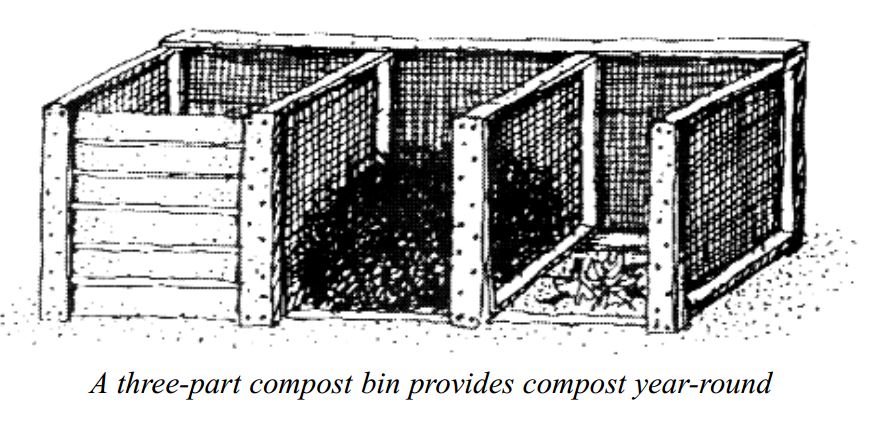Decomposed organic kitchen waste, combined with organic waste from your yard, makes great stuff. The black nuggets produced over time, generally between two and five months, will enrich your soil and promote the growth of healthy, vibrant plants and vegetables. Improving your soil’s structure allows plant roots to easily penetrate the ground, which, in turn, reduces overall runoff and erosion from planted areas. On the Neck, adding organically enriched matter to the soil base not only makes sense, but may be the only way to guarantee that certain vegetables will thrive. Because soils here tend to be sandy, adding compost and mulch will improve percolation and help with water retention, to say nothing of adding much needed nutrients.

What should go into your compost pile? All vegetables and organic waste. Do not include meats, which don’t break down quickly and attract rodents and other pests. Add to your kitchen waste leaves and leaf litter, grass clippings, and other shredded twigs and small branches available after spring pruning. What you’re after here is a good source of nitrogen, which feeds the microbial gobblers who break down the pile.
Here are a few tips to get a good compost pile going. Start with a shallow layer (say 3 inches) of coarse material: large vegetable stalks, twigs and small branches, or perhaps a wooden pallet. Add 8 to 10 inches of leaves and organic waste from your kitchen. On top of this, layer about 2 to 3 inches of fresh grass clippings, or green manure. Repeat the organic waste and grass/nitrogen-producing layers, until you have about a 2- to 3-foot pile going. At this point, you may want to add about an inch of soil to get the gobblers started.
As you build your pile, moisten each layer of dry materials and shape the pile concavely, allowing water to run to the center. You’ll need to keep the pile moist, but not soaking wet, during dry weather spells. At least once a month, plan to turn your pile, moving inner materials to the perimeter and vice versa. If you notice an ammonia-like smell, your pile may be too wet or in need of air circulation. Turn it over and, while doing so, add some coarser materials to increase air pockets.
Following the above regime, you’ll be able to rub a good supply of prime, ready-to-use compost through your fingers in about five months. If you need a supply faster, turn your pile more frequently, keep it moist, and minimize large material, which takes longer to break down. You may also want to keep two or three separate piles going at differing stages of decay, to increase availability throughout the year.
Composting can be done in fancy, three-part structures, or in no structure at all. Look around your yard, in the shed, and at the County waste-collection center for materials to construct a holding bin: wooden planks, freight pallets, concrete blocks or bricks, posts and chicken wire. Or, if money’s not a consideration but time is, you can purchase a pre-built compost bin from large garden or home-builder’s supply companies.

The ideal size for a compost bin seems to be a square, 4’x4’x4’. This allows the inside of the pile to reach 160°F, the temperature needed for good microbial action. Leave one side open to allow easy access for turning the pile—unless, that is, you happen to be visited by raccoons or a neighborhood dog, or a similarly curious domestic friend with a steel-lined stomach. If so, you’ll want to enclose the pile with an easy-to-open latch door. You might also consider placing your compost pile near a slope leading to a garden area, or under a fruit tree, to take advantage of nutrients leaching out from underneath.
Even with all these recycled nutrients and minerals added to your soil, you may need to do more to improve what you started with. Gardeners recommend covering all planted areas with liberal layers of mulch. Around here, pine needles and shredded pine bark are readily available and affordable, as are some types of hardwood shavings and nuggets.
Just about every county on the Neck offers mulch to county residents free for the hauling from the central collection centers. In addition to improving soil structure as it decays, mulch improves water retention and retards surface runoff. If your garden area is too large to be mulched, consider planting a cover crop like hairy vetch or crimson clover. Planted after the fall harvest, it will improve your soil by taking nitrogen from the air and feeding it into the ground.
